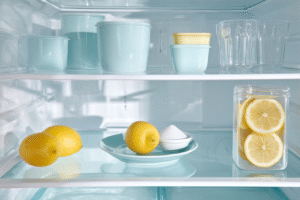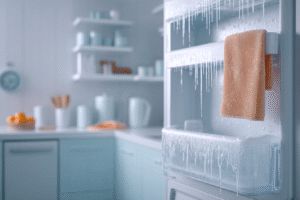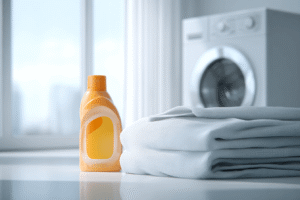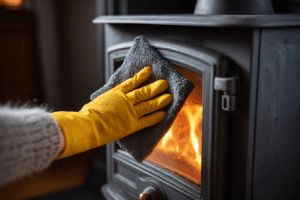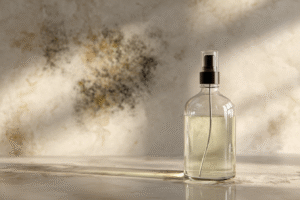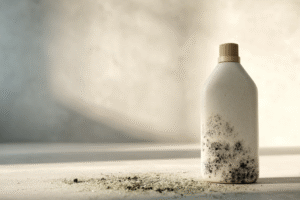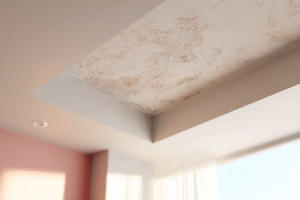Summarise this article with:
Spotted those dreaded black spots creeping across your bathroom ceiling? You’re not alone. Mould on bathroom ceilings is one of the most common household challenges we face, especially during the colder months when condensation levels soar. The good news? With the right approach, you can banish that unsightly mould and prevent it from making an unwelcome return. We’re here to guide you through every step of the process, from understanding what causes mould growth to implementing long-term prevention strategies that’ll keep your bathroom fresh and healthy.
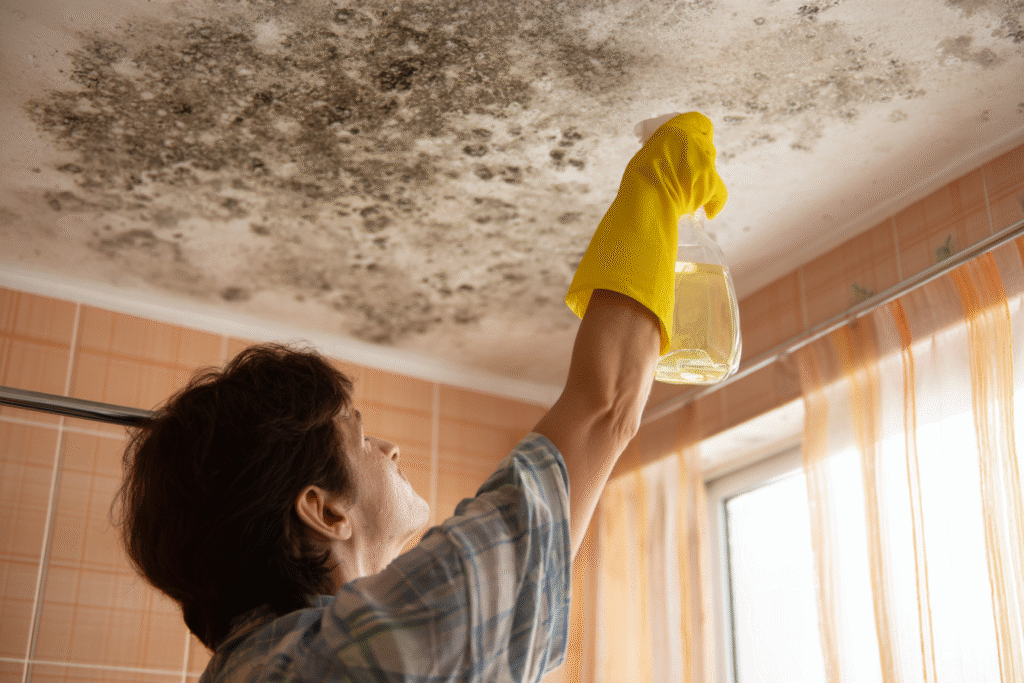
What Causes Mould on Bathroom Ceilings?
Understanding the root causes of ceiling mould is your first step towards creating a healthier living space. Let’s break down the main culprits behind this persistent problem.
Humidity and Steam from Showers
Hot showers release large amounts of steam. When this warm, moist air rises and meets the colder bathroom ceiling, it creates the perfect breeding ground for mould. The temperature difference accelerates condensation, and tiny water droplets settle, giving mould the moisture it needs.
Poor Ventilation
Bathrooms without proper ventilation trap this steam, keeping surfaces damp for much longer than they should be. An ineffective extractor fan, or a blocked or rarely used vent, only makes matters worse.
Condensation Issues
If your ceiling is poorly insulated, it will naturally be colder than the rest of the room. As humid air rises, it condenses on the ceiling surface. Over time, this constant cycle encourages persistent mould growth.
Roof Damage and Leaks
Sometimes, the source isn’t the bathroom itself but above it. A leaky roof or damaged plumbing can cause water ingress, seeping into the ceiling and creating hidden damp patches that quickly attract mould. These issues require immediate attention to avoid structural damage.
Is Black Mould on Bathroom Ceilings Dangerous?
Yes, black mould on your bathroom ceiling can pose health risks, particularly for vulnerable individuals. Mould spores can trigger respiratory issues, worsen conditions like asthma, and cause allergic reactions including eye, nose, and throat irritation. Children, elderly people, and those with compromised immune systems are especially at risk.
If you’re experiencing unexplained respiratory symptoms that seem worse at home, it’s worth investigating whether mould might be the culprit. While small areas of mould can often be tackled safely at home, extensive mould growth or recurring problems may require professional assessment. Always wear a protective mask and gloves when cleaning mould, and ensure good ventilation during the cleaning process to avoid inhaling mould spores.
How Do You Remove Mould from a Bathroom Ceiling?
Ready to clean your ceiling? Here’s your step-by-step guide to safe and effective mould removal.
Before You Start: Safety First
Never underestimate the importance of protecting yourself during the cleaning process. Always wear a protective mask, gloves, and ensure your bathroom is well-ventilated. Open windows, turn on your extractor fan, and consider using a fan to improve air circulation. This prevents you from inhaling mould spores and cleaning product fumes.
DIY Cleaning Methods
White Vinegar Solution
White vinegar is a natural way to kill mould without harsh chemicals. Pour undiluted white vinegar into a spray bottle and spray directly onto the mouldy areas. Leave it to work for at least an hour – the acetic acid in vinegar penetrates and kills mould at the root. No scrubbing needed; simply wipe clean with a damp cloth and dry thoroughly.
Bleach Solution
To get rid of stubborn black mould spots, a bleach solution can be highly effective for mould. Mix one part bleach with three parts water in a spray bottle. Apply to the affected areas and allow it to work for about 30 minutes before wiping clean. Remember to wear protective gear and ensure excellent ventilation when using bleach, as the fumes can be harmful.
Baking Soda Paste
For a gentler approach, particularly on delicate surfaces, create a paste using baking soda and water. Apply this paste to the mouldy area, let it sit for 10-15 minutes, then gently scrub with a soft brush or sponge. Rinse thoroughly with clean water and dry completely.
Best Way to Remove Mould: Step-by-Step Cleaning Process
- Prepare the area: Remove any items that might get in the way and lay down protective covering
- Apply your chosen solution: Whether vinegar, bleach, or baking soda, apply liberally to all affected areas
- Allow proper dwell time: Let the solution work – patience is key for effective mould removal
- Gently remove the mould: Use a soft cloth or sponge; aggressive scrubbing can spread spores
- Dry thoroughly: Use a clean, dry cloth to remove all moisture, then ensure good airflow to complete the drying process
How Do You Prevent Mould Growth on Bathroom Ceilings?
Prevention is always better than cure, and with mould, it’s significantly easier too. Here are the most effective ways to stop mould from taking hold in the first place.
Improve Ventilation
Good ventilation is the best way to prevent ceiling mould. Install or upgrade your extractor fans to ensure they’re powerful enough for your space. A good rule of thumb is that your fan should be able to change the air in your bathroom 6-8 times per hour. Keep windows open when possible, especially during and after showers, and ensure your extractor fan runs for at least 30 minutes after you’ve finished bathing.
Reduce Moisture Levels
Simple changes to your daily routine can make a huge difference. Take cooler, shorter showers when possible, and always wipe down surfaces after use with a dry cloth. A squeegee is brilliant for removing excess moisture from shower screens and tiles. Consider using a dehumidifier in your bathroom, particularly during humid weather or if your bathroom lacks natural ventilation.
Upgrade Your Bathroom
Anti-Mould Paint
Anti-mould paint contains special additives that prevent mould growth, even in high-humidity environments. These paints create a surface that repels moisture and discourages mould spores from taking hold. If you’re planning to redecorate, mould-resistant paint is an excellent investment for long-term protection.
Better Insulation
Addressing cold ceiling issues through improved insulation can prevent condensation at its source. Proper insulation keeps your ceiling warmer, reducing the temperature difference that causes condensation. This might require professional assessment, but it’s often the most effective long-term solution.
PVC Ceiling Panels
For a maintenance-free solution, consider PVC ceiling panels. These waterproof panels don’t absorb moisture like traditional plaster ceilings, making them virtually mould-proof. They’re also incredibly easy to clean and maintain, simply requiring a wipe-down with your favourite bathroom cleaner.
Daily Habits That Help
Small daily changes can create a significantly healthier living space. Always leave your bathroom door open after use to improve air circulation. Avoid drying clothes in your bathroom, as this adds unnecessary moisture to the air. Keep your extractor fan clean and free from dust to ensure it works effectively.
How Do You Permanently Remove Mould from Bathroom Ceilings?
Sometimes DIY methods aren’t enough, particularly if you’re dealing with extensive mould growth or if the problem keeps returning despite your best efforts. Professional mould removal services have access to industrial-grade equipment and treatments that can address severe mould problems more effectively than household products.
The key to permanent mould removal is addressing the underlying cause. This might involve structural repairs, improved ventilation systems, or waterproofing work. While these solutions require more investment upfront, they provide peace of mind and prevent costly damage in the long run.
If mould keeps returning despite thorough cleaning and prevention efforts, it’s time to call in the experts. Professional assessment can identify hidden moisture sources or structural issues that aren’t immediately obvious.
Treatment Options for Different Ceiling Types
Painted Ceilings
Most painted ceilings can be successfully cleaned using the methods we’ve outlined. However, if the mould has penetrated deeply or if the paint is peeling, you may need to scrape off loose paint and repaint with mould-resistant paint. Always use a stain-blocking primer before repainting to prevent mould stains from bleeding through.
Artex and Textured Ceilings
Textured ceilings present special challenges because mould can hide in the grooves and patterns. These surfaces often require more patience and may need professional assessment, particularly if the texture contains asbestos (common in older properties). Never sand or scrape textured ceilings without professional advice.
Plasterboard Issues
When mould has penetrated deeply into plasterboard, replacement may be necessary. If the ceiling feels soft or spongy, or if mould growth is extensive, it’s often more cost-effective to replace the affected area rather than attempting to clean it. This also provides an opportunity to address any underlying insulation or ventilation issues.
When to Call the Professionals
Certain situations require professional intervention. If mould covers an area larger than 10 square feet, keeps returning despite thorough cleaning, or if anyone in your household has serious health concerns, it’s time to seek expert help. Professional mould removal services can provide peace of mind and ensure the job is done safely and effectively.
Removing mould on your ceiling doesn’t have to be a losing battle. With the right approach to cleaning, consistent prevention efforts, and professional help when needed, you can maintain a fresh, healthy bathroom environment. Remember, we’re always here to help you create the comfortable, clean home you deserve.



